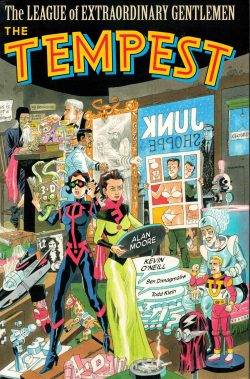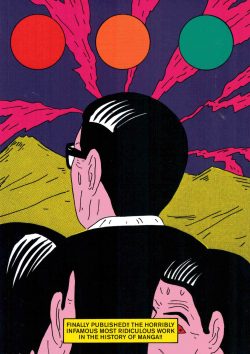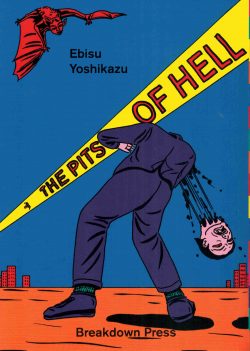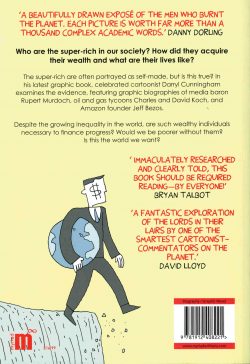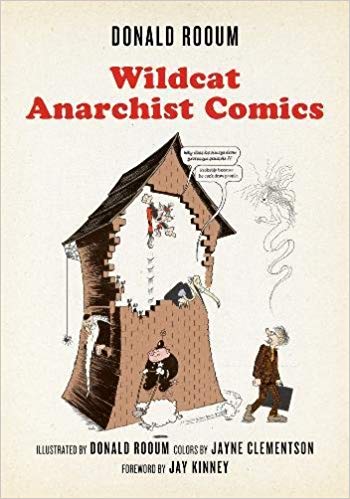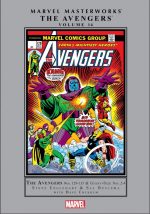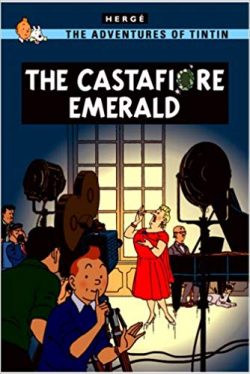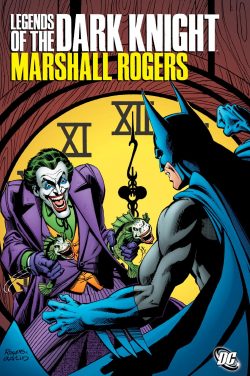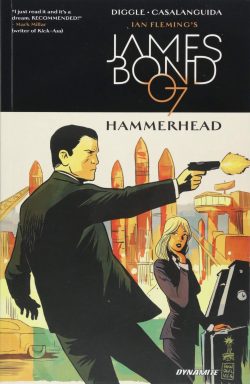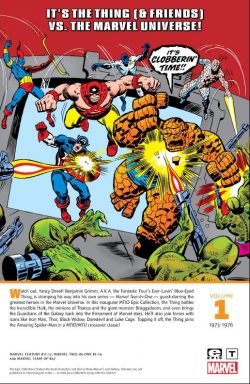

By Steve Gerber, Bill Mantlo, Len Wein, Mike Friedrich, Chris Claremont, Roy Thomas, Roger Slifer, Marv Wolfman, Scott Edelman, Tony Isabella, Jim Starlin, Gil Kane, Sal Buscema, Ron Wilson, George Tuska, Herb Trimpe, Bob Brown, Arvell Jones & various (Marvel)
ISBN: 978-1-3029-1332-8 (TPB)
Win’s Christmas Gift Recommendation: A Brash, Bold Cornucopia of Classic Comics Collaborations… 8/10
Imagination isn’t everything. As Marvel slowly grew to a position of dominance in the wake of losing their two most innovative and inspirational creators, they did so less by risky experimentation and more by expanding and exploiting proven concepts and properties.
The only real exception to this was their en masse creation of horror titles in response to the industry down-turn in super-hero sales – a move expedited by a rapid revision in the wordings of the increasingly ineffectual Comics Code Authority rules.
The concept of team-up books – an established star pairing, or battling – often both – with less well-selling company characters, was not new when Marvel decided to award their most popular hero the lion’s share of this new title, but they wisely left their options open by allocating an occasional substitute lead in the Human Torch. In those long-lost days, editors were acutely conscious of potential over-exposure – and since super-heroes were actually in a decline, they may well have been right.
After the runaway success of Spider-Man‘s collaborations in Marvel Team-Up, the House of Ideas reinforced the trend with a series starring bashful, blue-eyed Ben Grimm – the Fantastic Four‘s most iconic member – beginning with two test runs in Marvel Feature before graduating to its own somewhat over-elaborate title.
This compelling compendium – available in trade paperback and digital formats – gathers the contents of Marvel Feature #11-12, Marvel Two-In-One #1-19 and Marvel Team-Up #47, covering the period September 1973 – September 1976, and it all kicks off with a perennial favourite pairing as the Thing once more clashes with the Hulk in ‘Cry: Monster! (by Len Wein, Jim Starlin & Joe Sinnott from MF #11).
Here Kurrgo, Master of Planet X and the lethal Leader manipulated both blockbusting brutes into duking it out – ostensibly to settle a wager – but with the mighty minded, misshapen masterminds concealing hidden agendas…
That ever-inconclusive yet cataclysmic clash leaves Ben stranded in the Nevada desert where Mike Friedrich, Starlin & Sinnott promptly drop him in the middle of the ongoing war against mad Titan Thanos as Iron Man helps the Thing crush monstrous alien invaders in ‘The Bite of the Blood Brothers!’ (#12, November 1973): another spectacular and painfully pretty all-action punch-up.
Still stuck in the desert when the dust settles, Ben eventually treks to an outpost of civilisation just in time to be diverted to Florida in Marvel Two-In-One #1 (cover-dated January 1974) as Steve Gerber, Gil Kane & Sinnott magnificently reveal the ‘Vengeance of the Molecule Man!’ with Ben learning some horrifying home truths about what constitutes being a monster by battling with and beside ghastly, grotesque anti-hero Man-Thing.
With the second issue Gerber cannily trades a superfluous supporting character from his Man-Thing series to add some much-needed depth to the team-up title. ‘Manhunters from the Stars!’ pits Ben, old enemy Sub-Mariner (another series Gerber was currently writing) and the Aquatic Avenger’s powerful cousin Namorita against each other and aliens hunting the emotionally and intellectually retarded superboy Wundarr. Again a dynamically, intoxicatingly tale illustrated by Kane & Sinnott, this case also leaves the Thing as de facto guardian of the titanic teenaged tot…
Sal Buscema signed on as penciller with #3 as the Rocky Ranger joins the Man Without Fear ‘Inside Black Spectre!’: a crossover instalment of the extended epic then playing out in Daredevil #108-112 (in case you’re wondering, this action-packed fight-fest occurs between the second and third chapters) after which ‘Doomsday 3014!’ (Gerber, Buscema & Frank Giacoia) finds Ben and Captain America catapulted into the 31st century to save Earth from enslavement by the reptilian Brotherhood of Badoon, leaving Wundarr with Namorita for the foreseeable future…
The furious future-shocker concludes in MTIO #5 as the Guardians of the Galaxy (not the movie group) climb aboard the Freedom Rocket to help the time-lost heroes liberate New York before returning home. The overthrow of the aliens was completed by another set of ancient heroes in Defenders #26-29 (that’s the subject of a different review).
Marvel Two-In-One #6 began a complex crossover tale with the aforementioned Defenders as Dr. Strange and the Thing witness a cosmic event which begins with a subway busker’s harmonica and leads inexorably to a ‘Death-Song of Destiny!’ (Gerber, George Tuska & Mike Esposito) before Asgardian outcasts Enchantress and the Executioner attempt to seize control of unfolding events in #7’s ‘Name That Doom!’ (pencilled by Sal Buscema).
As they are thwarted by Grimm and the valiant Valkyrie, there’s enough of an ending here for casual readers, but fans and completists will want to hunt down Defenders #20 or Defenders Masterworks volume 3 for the full story…
Back here though, issue #8 teams Grimm and supernatural sensation Ghost Rider in quirkily compelling Yuletide yarn ‘Silent Night… Deadly Night!’ (Gerber, Buscema & Esposito) as the audacious Miracle Man tries to take control of a very special birth in a stable…
Gerber moved on after plotting Thor team-up ‘When a God goes Mad!’ for Chris Claremont to script and Herb Trimpe & Joe Giella to finish: a rather meagre effort with the Puppet Master and Radion the Atomic Man making a foredoomed power play, but issue #10 – by Claremont, Bob Brown & Klaus Janson – is a slice of inspired espionage action-intrigue with Ben and Black Widow battling suicidal terrorist Agamemnon who plans to detonate the planet’s biggest nuke in blistering thriller ‘Is This the Way the World Ends?’.
Marvel Two-In-One quickly became a kind of clearing house for cancelled series and uncompleted storylines. Supernatural series The Golem ran in Strange Tales #174, 176 & 177 (June-December 1974) before being summarily replaced mid-story by Adam Warlock, and MTIO #11 provided plotter Roy Thomas, scripter Bill Mantlo and artists Brown & Jack Abel to offer some spectacular closure when ‘The Thing goes South’: resulting in stony bloke and animated statue finally crushing the insidious plot of demonic wizard Kaballa.
Young Ron Wilson began his lengthy association with the series and the Thing in #12 as Iron Man and Ben tackle out of control, mystically-empowered ancient Crusader Prester John in ‘The Stalker in the Sands!’; a blistering desert storm written by Mantlo and inked by Vince Colletta, after which Luke Cage, Power Man pops in to help stop a giant monster in kI Created Braggadoom!, the Mountain that Walked like a Man!’ – an unabashed homage scripted by Roger Slifer & Len Wein – whilst Mantlo, Trimpe & John Tartaglione deliver a spooky encounter with spectres and demons in #14’s ‘Ghost Town!’ This moody mission was shared with exorcist Daimon Hellstrom, The Son of Satan and left Ben rattled for months to come…
Mantlo, Arvell Jones & Dick Giordano brought on ‘The Return of the Living Eraser!’: a dimension-hopping invasion yarn introducing Ben to Morbius, the Living Vampire, after which a canny crossover epic begins with the Thing and Ka-Zar plunging ‘Into the Savage Land!’ to dally with dinosaurs and defeat resource plunderers. The action then switches to New York as Spider-Man joins the party in MTIO #17 to combat ‘This City… Afire!’ (Mantlo, Sal Buscema & Esposito) after mutated madman Basilisk transports an active volcano from Antarctica to the Hudson River, with the cataclysmic conclusion (from Marvel Team-Up #47) following, wherein Mantlo, Wilson & Dan Adkins have the heroes finish off the epic and save the day in fine style with ‘I Have to Fight the Basilisk!’
Another short-changed supernatural serial is laid to rest in MTIO #18. ‘Dark, Dark Demon-Night!’ – Mantlo, Scott Edelman, Wilson, Jim Mooney & Adkins – sees enigmatic mystical watchdog The Scarecrow escape from its painted prison to foil a demonic invasion with the reluctant assistance of the Thing, after which Tigra the Were-Woman slinks into Ben’s life to vamp a favour and crush a sinister scheme by a rogue cat creature in ‘Claws of the Cougar!’ by Mantlo, Sal Buscema, & Don Heck.
That yarn ends the narrative thrills and chills for now, but there’s still room for a trove of house ads and original art by Kane & Wilson to delight and astound.
These stories from Marvel’s Middle Period are of variable quality but nonetheless represent an honest attempt to entertain and exhibit a dedicated drive to please. Whilst artistically the work varies from adequate to utterly superb, most fans of the frantic Fights ‘n’ Tights genre would find little to complain about.
Although not really a book for casual or more maturely-oriented readers there’s still buckets of fun on hand and young readers will have a blast, so why not to add this colossal comics chronicle to your straining superhero bookshelves?
© 1973, 1974, 1975, 1976, 2018 Marvel Characters, Inc. All rights reserved.


